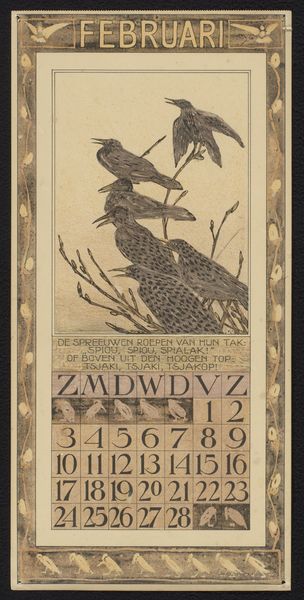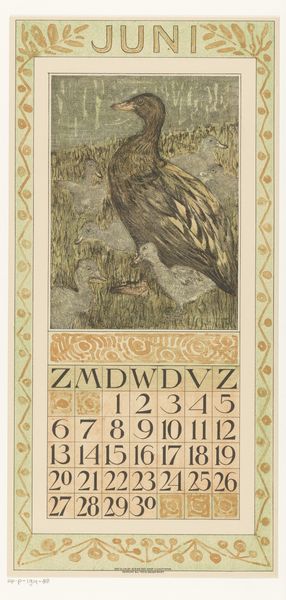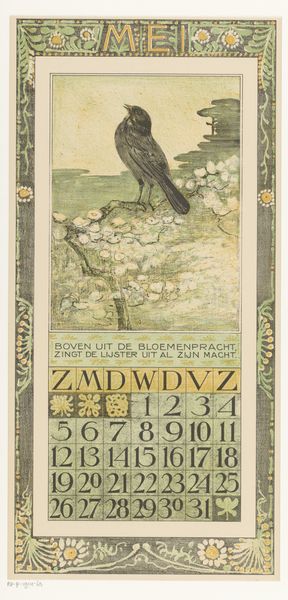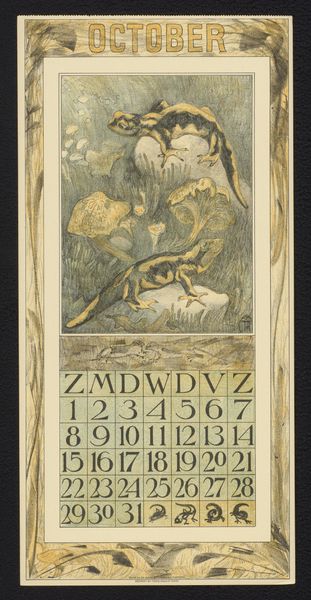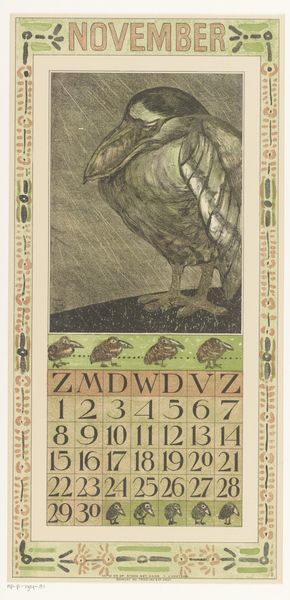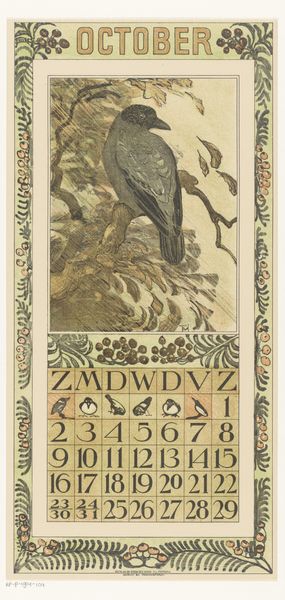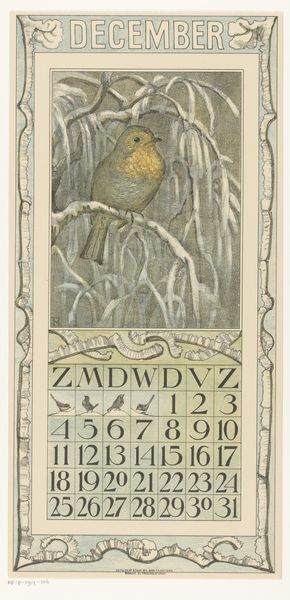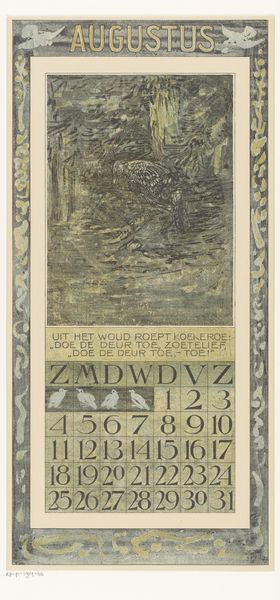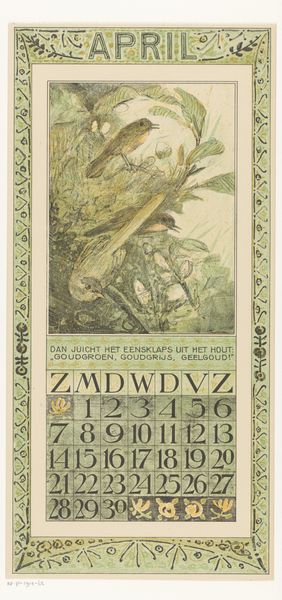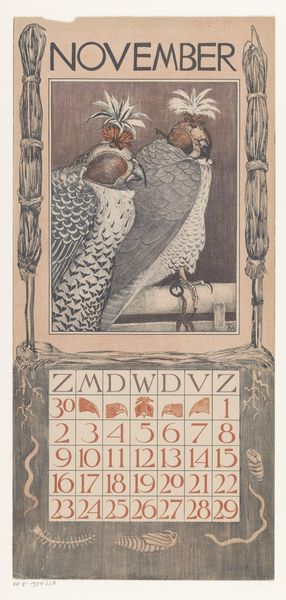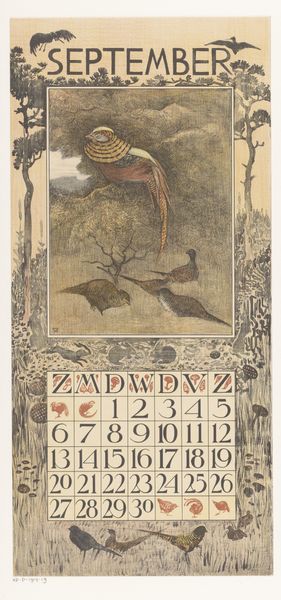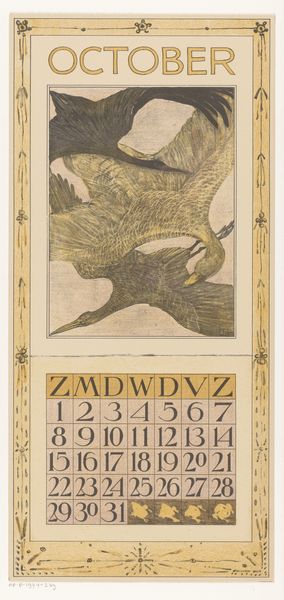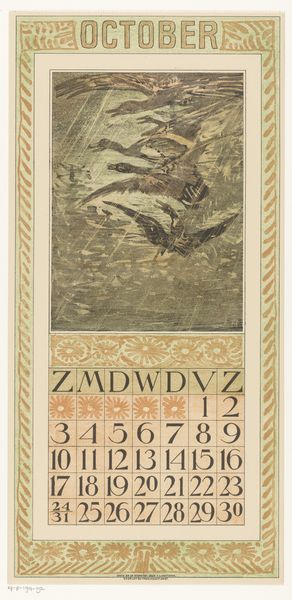
lithograph, print
#
natural stone pattern
#
naturalistic pattern
#
art-nouveau
#
animal
#
lithograph
#
loose pattern
# print
#
landscape
#
bird
#
geometric pattern
#
tile art
#
subtle pattern
#
vertical pattern
#
pattern repetition
#
layered pattern
#
combined pattern
Dimensions: height 443 mm, width 213 mm
Copyright: Rijks Museum: Open Domain
Editor: This is a lithograph by Theo van Hoytema, a calendar sheet for January 1907, made in 1906. I find the overall palette very muted, but it makes the bird stand out all the more. The Art Nouveau border also catches my eye, with its stylized botanical motifs. How do you interpret the symbolism in this piece? Curator: This print encapsulates the fin-de-siècle yearning for connection to nature and a sense of cyclical time. Consider the bird, likely a song thrush, positioned at the top; in many cultures, birds symbolize freedom, the soul, and communication between realms. What does January, often a cold and bleak month, suggest when paired with the vitality of the bird’s song? Editor: It’s interesting how the border is also very repetitive, creating that sense of time passing... almost meditative. And juxtaposing January with new life emphasizes that transition from darkness to hope. Curator: Exactly. Notice also how the calendar grid presents time in a structured, almost regimented way. But even there, you see decorative motifs breaking up that strict organization! This calendar is not just functional, but an attempt to find harmony between the natural world and human order. The bird's call challenges the rigidity of the calendar. Where might this tension be felt in the culture of that time? Editor: That contrast hadn’t struck me so clearly before. Perhaps it’s a reminder to break free from daily constraints and connect with nature, particularly in the darker winter months? Thanks, that makes me see it differently. Curator: And perhaps understand the deeper anxieties and hopes that drove the creation and appreciation of such imagery.
Comments
No comments
Be the first to comment and join the conversation on the ultimate creative platform.
